Researcher in Residence
This residency offers the opportunity to develop projects focused on the MAMBO’s collection, archive, and exhibition program through the use of digital tools. Participants may explore interdisciplinary connections, historical contexts, or different lines of analysis, contributing to the academic discourse surrounding the museum’s collections. The use of MAMBO’s digitized works as a starting point for new research is especially encouraged.
The winner of the first edition was Júlia Fàrras (Spain) with her project What Feeds Us? Of Hearts and Stomachs in the MAMBO Collection.
About the Project
Fàrras’ project explored the intersection between hunger and love, two fundamental forces that feed both the body and the spirit. Through curating works from the MAMBO Collection, she created emotional and physical connections addressing themes such as hunger, nourishment, and food—understood not only as basic needs, but also as elements deeply tied to culture, memory, and identity.
In the first stage, Fàrras reviewed around 90 works from the collection, organizing them into thematic areas: food and identity; bars and restaurants; kitchen; eating and drinking; hunger; sensory and material interaction; still life and bodegón paintings; trades and nature; rituals and customs; symbolism; and social aspects. This classification allowed for curatorial refinement, later combined with dialogues and collaborations with chefs and sommeliers.
Júlia acted as curator and facilitator, connecting chefs with the selected works. Throughout the process, creative stages were documented through video, audio, and text, capturing the exchanges between chefs and the collection, and showing how the works inspired culinary proposals by Jefferson García, Laura Hernández, Tabi Isabel Castellanos, and Cristina Consuegra.
The process included individual meetings to select works for each dish. Cooking sessions were then held, recorded with the support of MAMBO’s audiovisual team. The resulting material was edited and compiled into a series of videos documenting these collaborations.
Finally, a website was created to bring together all the information generated during the project, including the research, connections with chefs, artwork analyses, and additional reflections—consolidating a digital research catalog.
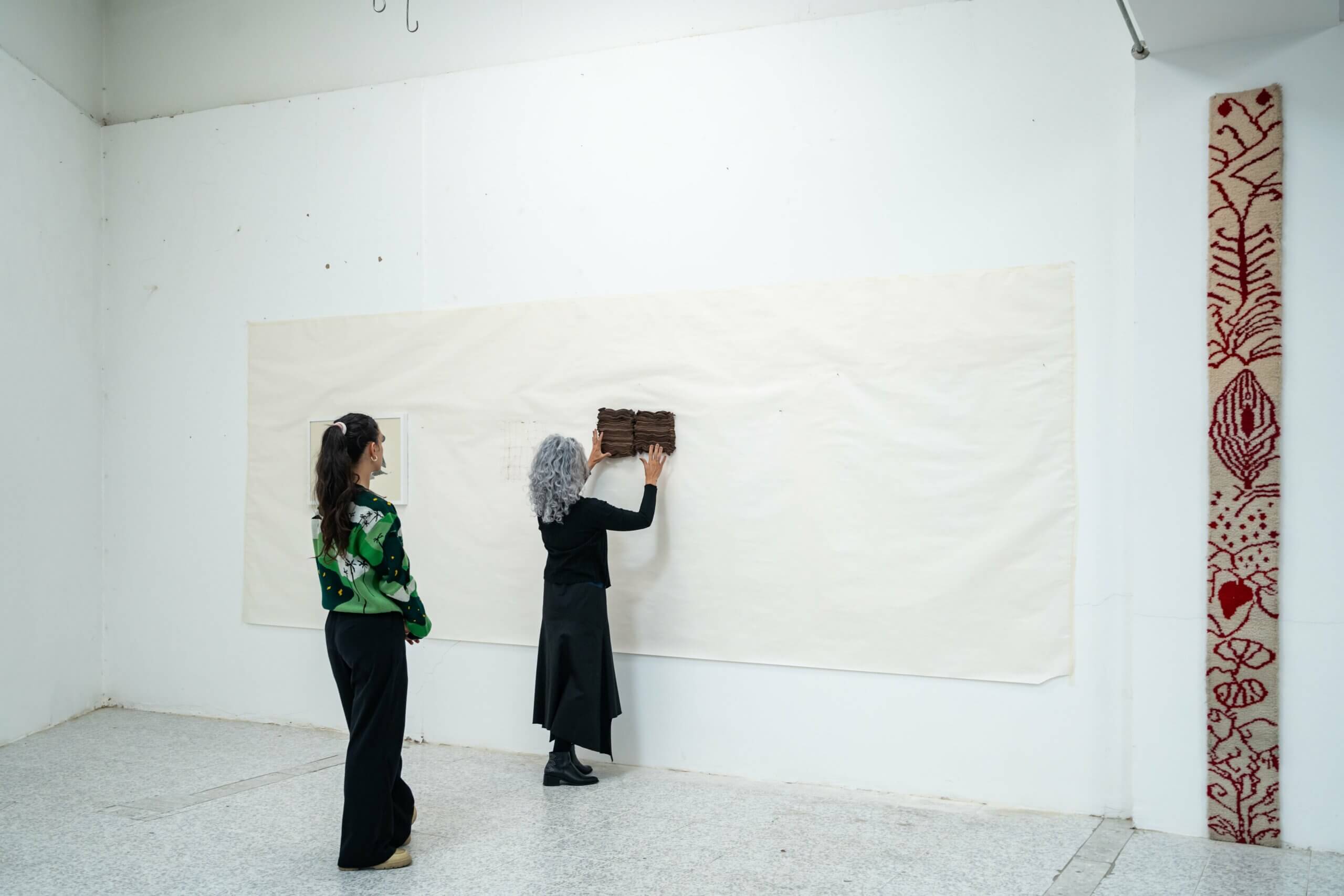
Júlia Fàrras and Luz Ángela Lizarazo in the artist’s studio during the creation process of Disponer el ablandamiento (2024). Photograph by Juan Yaruro.
Jefferson García (restaurant Afluente) created a dish representing Colombia’s territories in a tangible way. The textures and colors of Miguel Ocampo, the graphic narrative of María Curtin, the visual strength of Diego Samper’s photographs, and the materiality of Nijolė Šivickas’ ceramics guided the creative process.
The dish incorporated ingredients representative of the páramos (high-altitude ecosystems) and other regions of the country, visually and materially reflecting the selected works. This proposal established a link between local natural resources and artistic language, generating an experience combining visual, cultural, and sensory elements.
MAMBO Collection works in the project:
- Diego Samper, Julia y Francisca, Calambás-Tombé, 1977, black-and-white photograph, 39 × 26 cm.
- Miguel Ocampo, Untitled series, 1972, acrylic on canvas, 45.5 × 56 cm.
- María Curtin, La cena, 1990, silkscreen 1/30, 40 × 26 cm.
- Nijolė Šivickas, Untitled (La flor), 1986, ceramic.
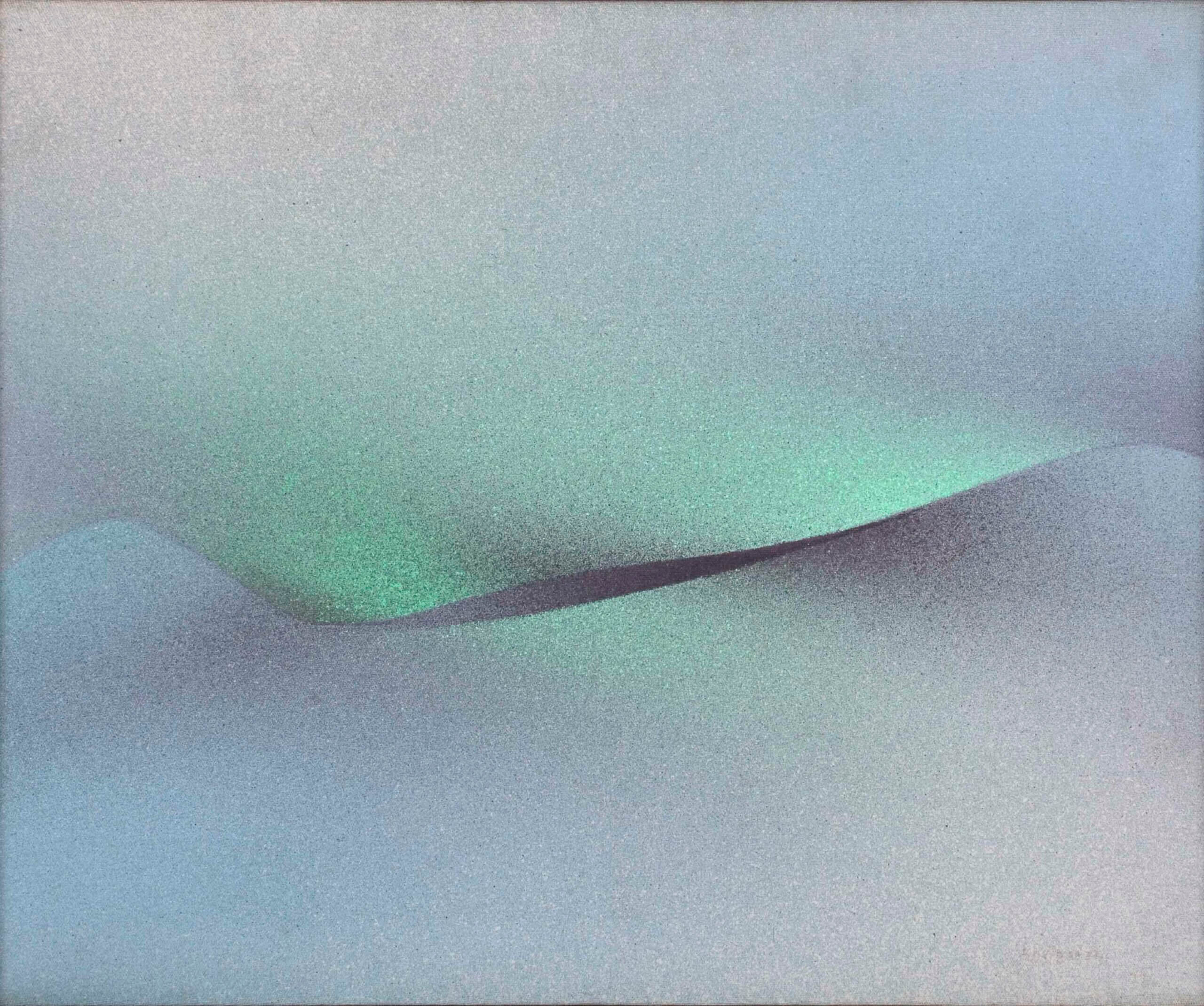
Miguel Ocampo, serie Sin título, 1972, Colección MAMBO.
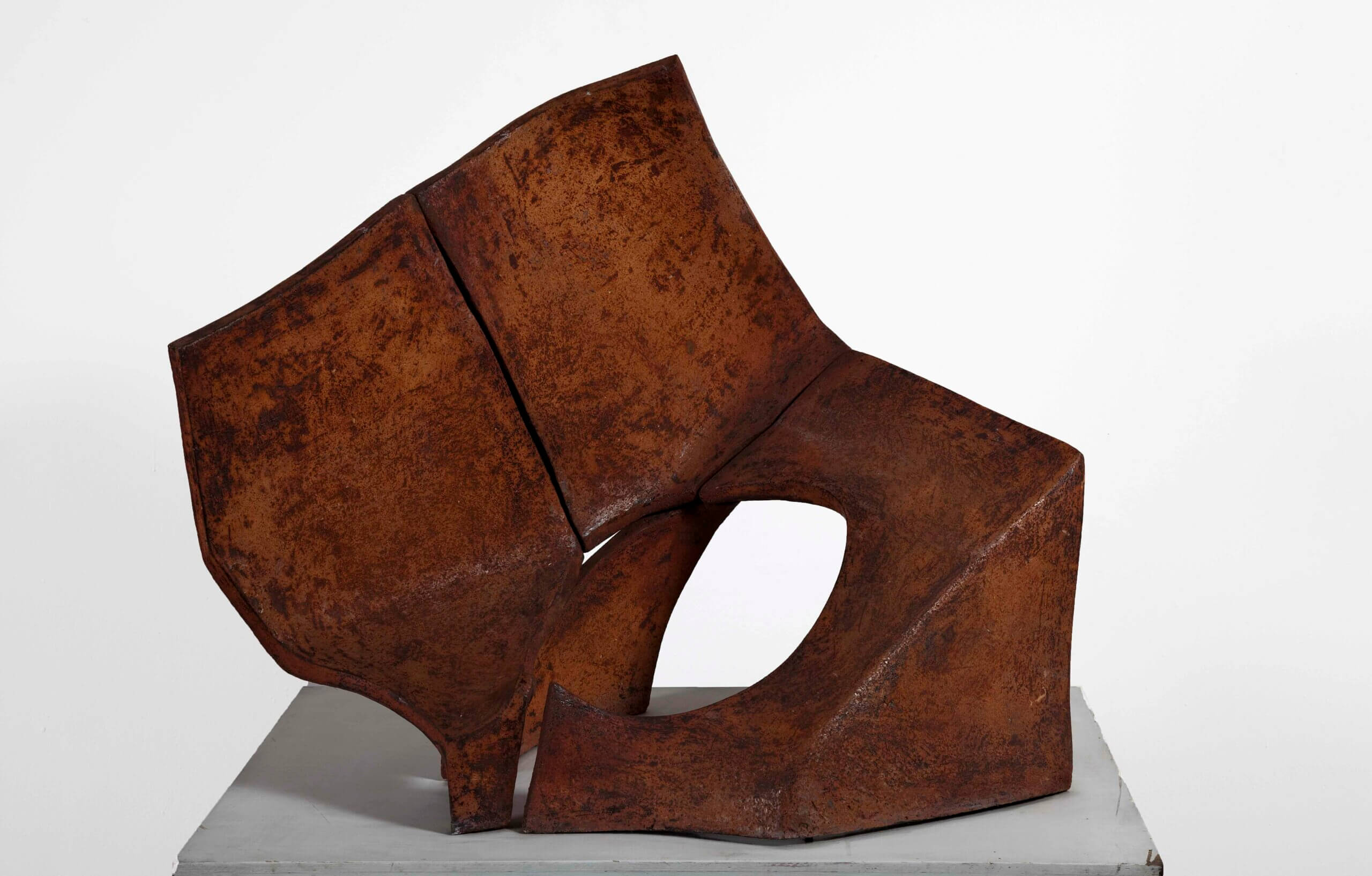
Nijole Sivickas, Sin título (La flor), 1986. Cerámica. Colección MAMBO.
A Dialogue with Sommelier Laura Hernández
In collaboration with sommelier Laura Hernández, Convergencia was created—a cocktail that interprets works by Beatriz González, Stephanie Quirola, and Alberto Sierra in liquid form. This proposal reflects on cultural identity, sustainability, and consumption dynamics, integrating ingredients and techniques that engage with the visual and conceptual languages of the works.
Inspired by Naturaleza sui generis (1972) by Beatriz González, Laura used a passionfruit and chirimbolo distillate, celebrating the authenticity of local flavors. Still Life with Glade® (2019) by Quirola led her to incorporate tree tomato ferment, promoting a conscious approach to consumption. Finally, Untitled (1985) by Alberto Sierra inspired the inclusion of “milk punch” as a nod to rural dairy production, along with frozen floral elements evoking the link between the urban, the everyday, and the natural.
MAMBO Collection works in the project:
- Beatriz González, Naturaleza sui generis, 1972, enamel on metal, 106 × 126 × 14 cm.
- Alberto Sierra, Untitled, 1985, silkscreen, 47.7 × 47.6 cm.
- Stephanie Quirola, Still Life with Glade®, 2019, installation (fruit and Glade air freshener).
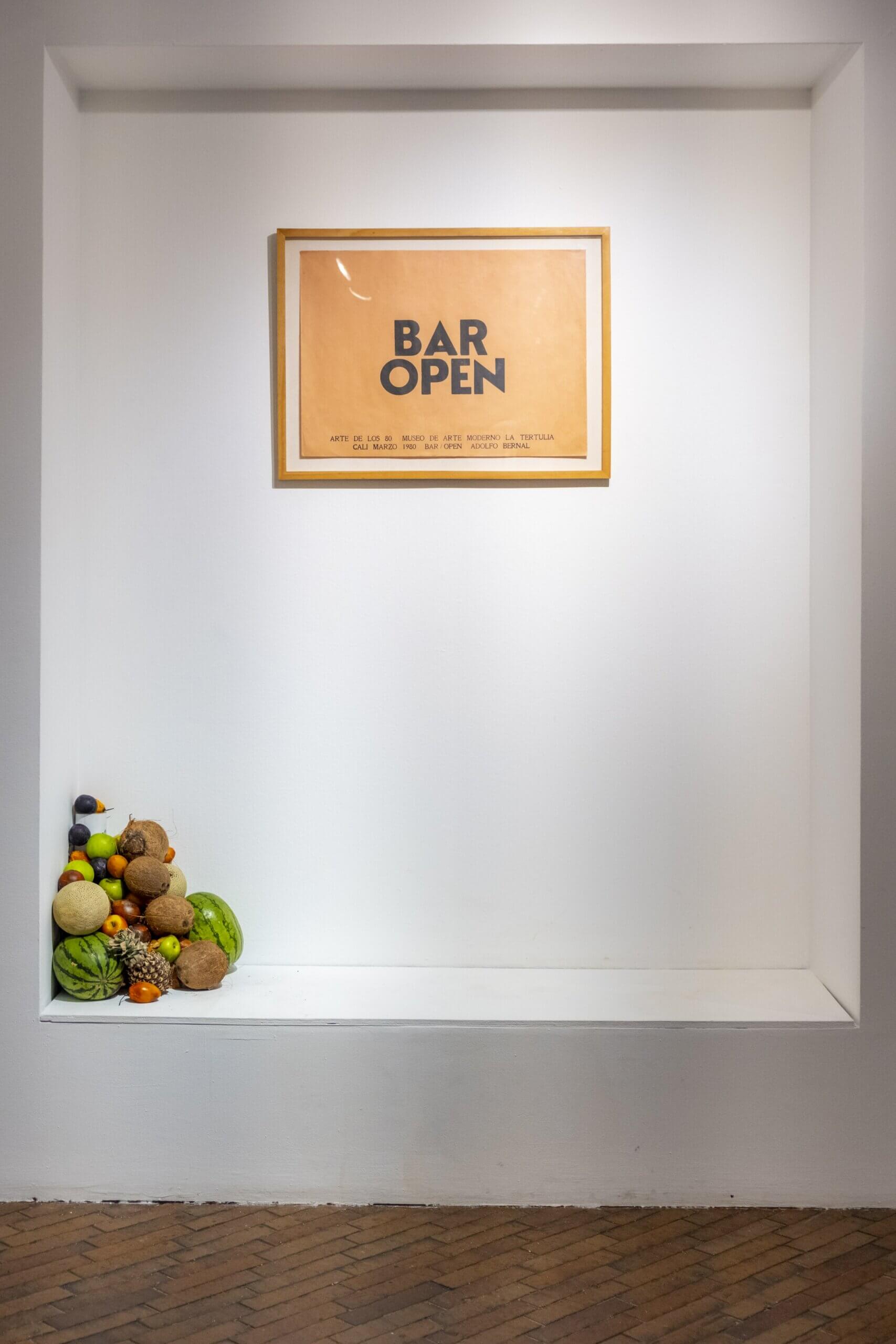
Stephanie Quirola, Still Life with Glade®️, 2019. Colección MAMBO.

Nijole Sivickas, Sin título (La flor), 1986. Cerámica. Colección MAMBO.
Identity and Memory
Collaboration with Chef Tabi Castellanos
With references ranging from cultural identity to historical memory, chef and ceramicist Tabi Castellanos used local ingredients to honor Colombian roots and traditions.
Tabi developed a tart inspired by themes of identity and memory, drawing from Pan de maíz by Carlos Alfonso, which prompted reflection on corn as both a visual and culinary symbol. Palenque by Ana Mercedes Hoyos highlighted women’s creativity and resilience in the kitchen. Milton Charruti’s textures inspired the use of native fruits, while the tragedy in Carlos Caicedo’s work prompted the use of cassava and corn flours. Inspired by Flor invisible by Jim Amaral and Ruby Posada’s spiral, the tart became a multisensory experience linking the artistic to the vital.
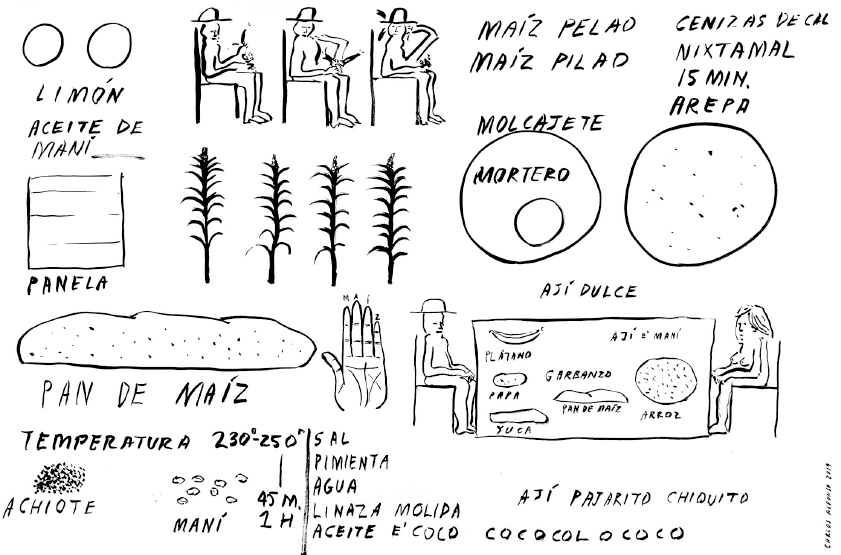
Carlos Alfonso, Pan de maíz, 2019. Colección MAMBO
- Ana Mercedes Hoyos, Untitled, 2008, acrylic on canvas.
- Ruby Posada, Regresar al principio es seguir adelante, 1987.
- Milton Charruti Blanc, Colombia vive, 1989.
- Carlos Alfonso, Pan de maíz, 2019.
- Carlos Caicedo, Envenenamiento en Chiquinquirá, 1967.
Affections, Art, and Gastronomy
A Dialogue with Cristina Consuegra
Chef and anthropologist Cristina Consuegra created a culinary experience inspired by MAMBO’s collection, integrating affections and memory as creative axes.
Among the pieces that influenced her proposal was Todas mis bestias, connecting land and emotions through the creation of a clay dining space evoking sowing and nourishment as acts of inner transformation. Adolfo Bernal’s Miel inspired the use of honey and bee-pollinated plants, honoring natural cycles and networks of collectivity. Este lugar by Cecilia Ordóñez led to a spiral clay table setting, reflecting the bond between identity and territory. Finally, Hermi Friedmann’s photography connected Cristina to Colombian landscapes and cultural diversity, leading her to incorporate roasted pineapple—learned in the jungle—as a personal representation of territory.
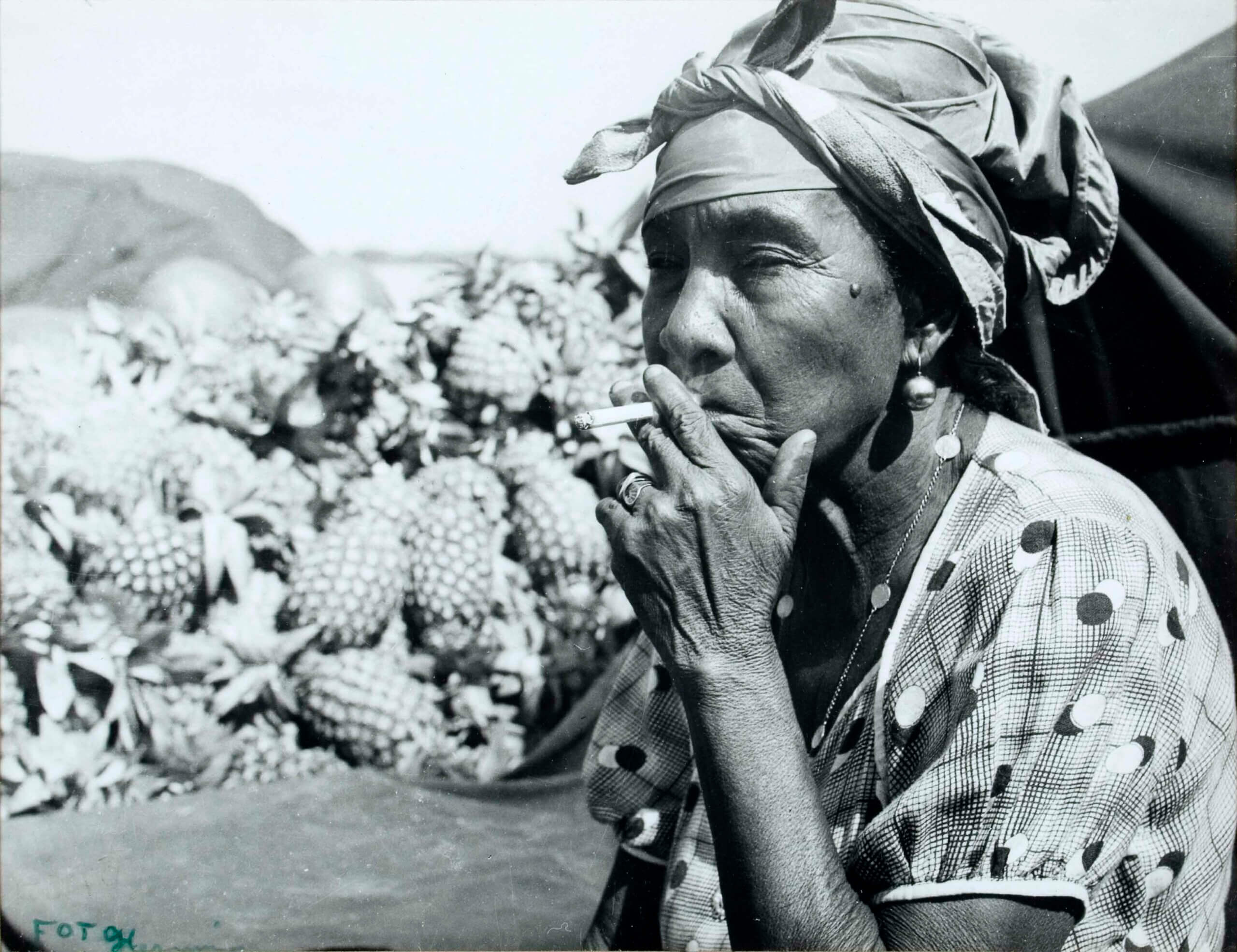
Hermi Friedman, Transporte de piñas en el Magdalena, 1960. Colección MAMBO.
- Adolfo Bernal, Miel, 1980, letterpress print, 34.5 × 49.5 cm.
- Hermi Friedman, Transporte de piñas en el Magdalena, 1960, black-and-white photograph, 17.8 × 23.3 cm.
- Luz Ángela Lizarazo, Serpientes, aves y lobos, from the Todas mis bestias series, 2020, mixed media on cotton paper.
- Luz Ángela Lizarazo, Disponer del ablandamiento, 2024, nylon stockings and agates.
- Luz Ángela Lizarazo, La mirada, paraffin, drawing, and collage (58 pieces), 1995.
About the Resident
Júlia Farràs Marginedas (Spain) works at the intersection of Humanities, Anthropology, and cultural management. She graduated with honors in Humanities from Pompeu Fabra University and holds a master’s degree in Anthropology and Ethnography from the University of Barcelona. She is currently pursuing her PhD in Society and Culture at the same institution. Splitting her time between Barcelona and Colombia, she has collaborated on research and cultural management projects with the Embassy of Spain in Colombia, the Truth Commission, Imaginart Gallery, Rebobinart, and Fundación Gladys Palmera, among others. Specializing in inclusive curatorial narratives through participatory methodologies, she currently works at the Embassy of Spain in Colombia while developing independent curatorial projects.
About the Call for Applications
From July 8 to 19, 2024, the call for applications for the Research Residency was open. A total of 55 applications were received from Colombia, Spain, Mexico, El Salvador, Chile, Costa Rica, Ecuador, Argentina, and Venezuela, coming from postgraduate students, emerging researchers, artists, curators, art historians, photographers, audiovisual producers, designers, architects, musicians, historians, sociologists, political scientists, anthropologists, philosophers, educators, archaeologists, conservators, and cultural managers.
Acknowledgments
This residency is made possible thanks to the New Frontiers in Research Fund of the Government of Canada [NFRF-2022-00245], in collaboration with Susana Vargas-Mejía.
